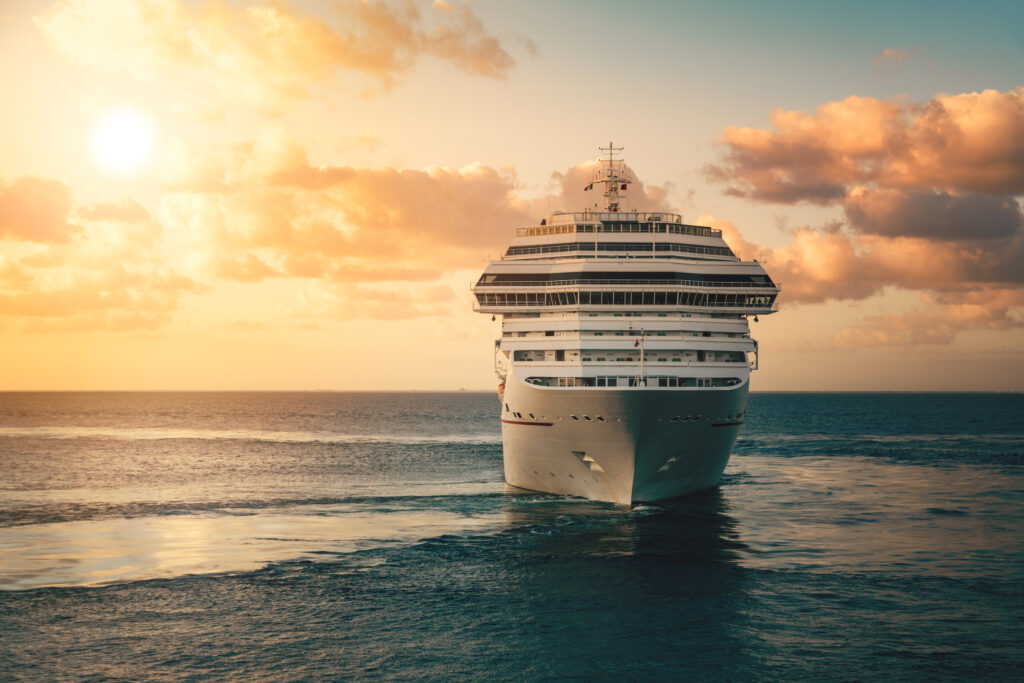Cruise ships are mega boats who wouldn’t seem to be very calm in the waters of the deep blue sea. But nowadays it is much safer that one could imagine, thanks to the planners who tuned these massive metal ‘vessels’ with strict and rigid rules in physics.
How do cruise ships stay afloat
It’s amazing to think about all the different ways that things float. Take a cruise ship, for example. How does something that big and heavy stay afloat?
Cruise ships are actually pretty fascinating from a physics perspective. Part of the reason they’re able to stay afloat is because of their size and weight. A big cruise ship has a lot of mass, and that mass makes it harder for the ship to tip over.
The other part of the equation is the shape of the ship. Cruise ships are designed so that their hulls displace a lot of water. In other words, when the ship is in the water, it pushes the water out of the way. That displaced water creates a force called buoyancy, and that force helps to keep the ship afloat.
Of course, there are other factors at play as well. The distribution of weight on the ship is important, as is the amount of ballast (heavy materials) in the bottom of the hull. But at its core, a cruise ship stays afloat because of its size, its weight, and its shape.
Effect of waves and wind on a ship
The Physics Of It: How Cruise Ships Don’t Tip Over
We all know that waves and wind can have a significant effect on the performance of a ship. But how does this affect the stability of a cruise ship?
It’s all to do with the center of gravity. The heavier the ship, the lower its center of gravity will be. This is why cruise ships are designed to be long and wide, with most of their weight distributed evenly throughout the hull.
This low center of gravity makes the ship much more stable in heavy seas and high winds. Even if a wave were to hit the side of the ship, or if strong winds were to push it sideways, the low center of gravity would prevent it from tipping over.
Of course, this doesn’t mean that cruise ships are immune to rough weather. They can still be tossed around by waves and buffeted by strong winds. But thanks to their design, they’re much less likely to capsize than other types of ships.
Statics of Design
Designing a cruise ship is no small feat- not only must architects take into account the size and weight of the vessel, but also the fact that it will be carrying thousands of people and tons of cargo. The stability of a cruise ship is essential to its safe operation, and engineers use a branch of physics known as statics to ensure that their ships are stable at sea.
When designing a ship, engineers must first calculate its center of gravity. This is the point at which the ship’s mass is evenly distributed, and it changes depending on the ship’s load (the weight of everything on board, including passengers, crew, cargo, and even water in the hull). The location of the center of gravity is important because it affects the ship’s stability. A ship is stable if its center of gravity is low and close to the middle of the hull; if it is too high or too far to one side, the ship will be unstable and may tip over in heavy seas.
To keep a cruise ship stable, engineers must carefully distribute its weight. The heaviest items are typically placed low in the hull, near the waterline. This helps to keep the center of gravity low and minimizes the risk of tipping. In addition to distributing weight evenly, engineers also design ships with ‘ballast tanks’ which can be filled with water to help stabilize the vessel in rough weather.
By understanding statics and using it to their advantage, engineers can design safe and stable
Shifting center of gravity
When a ship is out at sea, it constantly battles against the natural forces of wind and waves. To stay afloat, the ship must have a low center of gravity—the point where all the mass of the ship is evenly balanced. The lower the center of gravity, the more stable the ship will be.
Most cruise ships have several decks, each with their own weight. To keep the ship’s center of gravity low, these weights are spread out evenly between the front and back of the ship (this is why most cruise ships have a wide body). The heaviest items on the ship, such as the engines and generators, are also placed low in the hull to further stabilize the vessel.
If a cruise ship did tip over, it would likely be due to an extreme weather event or collision. However, even in these scenarios, modern cruise ships are designed to right themselves using ballast tanks filled with water. By shifting this water around, the ship can slowly rotate back into an upright position.
